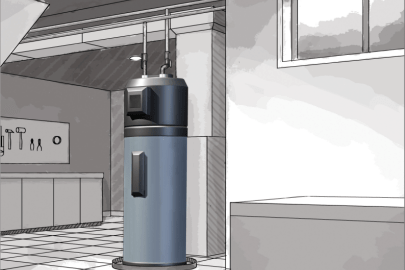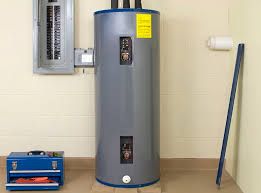Expert Guidance on Caring for Your Home's Hot Water System
Expert Guidance on Caring for Your Home's Hot Water System
Blog Article
We've unearthed this article pertaining to Tips on Maintaining a Water Heater down the page on the internet and felt it made perfect sense to share it with you in this article.

Warm water is vital for everyday comfort, whether it's for a refreshing shower or washing dishes. To ensure your hot water system runs effectively and lasts much longer, routine upkeep is crucial. This post offers sensible ideas and understandings on just how to keep your home's warm water system to stay clear of disturbances and expensive repair services.
Intro
Keeping your home's warm water system could appear overwhelming, yet with a couple of straightforward actions, you can ensure it operates efficiently for many years to find. This guide covers every little thing from recognizing your hot water system to do it yourself upkeep suggestions and knowing when to call in specialist assistance.
Significance of Keeping Your Warm Water System
Routine maintenance not just prolongs the lifespan of your warm water system but additionally guarantees it operates successfully. Ignoring upkeep can cause decreased efficiency, greater power expenses, and even early failing of the system.
Indications Your Hot Water System Needs Upkeep
Understanding when your hot water system needs focus can stop major issues. Keep an eye out for indicators such as inconsistent water temperature, weird sounds from the heating system, or rustic water.
Understanding Your Warm Water System
Prior to diving into maintenance jobs, it's valuable to understand the standard elements of your hot water system. Typically, this includes the water heater itself, pipelines, anode rods, and temperature level controls.
Regular Monthly Maintenance Tasks
Normal regular monthly checks can help capture minor problems before they rise.
Flushing the Hot Water Heater
Flushing your water heater eliminates sediment build-up, enhancing efficiency and lengthening its life.
Checking and Changing Anode Rods
Anode rods protect against rust inside the container. Checking and replacing them when worn is essential.
Evaluating and Changing Temperature Level Settings
Readjusting the temperature setups ensures ideal performance and security.
DIY Tips for Upkeep
You can perform a number of upkeep tasks on your own to keep your warm water system in top problem.
Looking for Leaks
Consistently check pipelines and connections for leakages, as these can lead to water damage and greater bills.
Examining Stress Relief Valves
Examining the pressure relief valve guarantees it operates correctly and protects against extreme pressure accumulation.
Insulating Pipelines
Insulating warm water pipes decreases warmth loss and can save energy.
When to Call an Expert
While do it yourself maintenance is helpful, some concerns require professional competence.
Complicated Concerns Requiring Expert Aid
Instances include major leaks, electrical issues, or if your hot water heater is consistently underperforming.
Routine Professional Upkeep Conveniences
Specialist maintenance can include comprehensive inspections, tune-ups, and ensuring compliance with safety requirements.
Final thought
Routine upkeep of your home's warm water system is necessary for performance, long life, and price financial savings. By complying with these ideas and understanding when to seek expert help, you can guarantee a dependable supply of hot water without unexpected disruptions.
Water Heater Maintenance Tips
Test the TPR Valve
Shut off the power and the cold-water supply valve. Place a bucket under the pipe connected to the temperature-pressure-release (TPR) valve on the top or side of the tank. (This valve opens if the tank pressure gets too high.) Lift the valve’s tab to let some water out, then let go. If water keeps flowing, drain the tank partway, unscrew the old valve with a pipe wrench, and install a new one. Check the Anode Rod
Put a hose to the tank’s drain cock and let out a few gallons of water. Now fit a 1 1/16-inch socket onto the rod’s hex head on top of the heater (or under its top plate) and unscrew the rod. If it’s less than ½ inch thick or coated with calcium, buy a new one, wrap its threads with Teflon tape, put it back in the tank, and tighten securely. Use this segmented rod if headroom above the tank is limited. Drain the Tank and Wash Out Sediment
Drain the remaining water in the tank into the bucket, then stir up the sediment on the tank’s bottom by briefly opening the cold-water supply valve. Drain and repeat until clean water comes out of the hose. Close the drain cock, refill the tank, and turn its power back on. Adjust the Temperature
Find the temperature dial on the side of the tank and unscrew its cover. Adjust the dial to 120 degrees using a flathead screwdriver. For every 10 degrees the temperature is lowered, you can expect to save up to 5 percent in energy costs. Turn the water heater off or the thermostat down to its lowest setting if you plan to be away from home for more than three days. Insulate the Pipes
Buy some self-sticking 3/8-inch-thick foam pipe insulation that matches the pipes’ diameter. Slide the foam over the hot-and cold-water pipes as far as you can reach. Insulating the cold-water pipe prevents condensation in summer. Peel the tape and squeeze the insulation closed. If the pipe is 6 inches or less from the flue, cover it with 1-inch-thick unfaced fiberglass pipe wrap. https://www.thisoldhouse.com/plumbing/21016402/how-to-maintain-a-water-heater

Hopefully you enjoyed reading our part about What Kind of Maintenance Do Water Heaters Need?. Thank you for taking a few minutes to browse our piece. If you appreciated our post if you please do not forget to pass it around. We take joy in reading our article about How to Maintain a Hot Water Heater in a Few Simple Steps.
Schedule Today! Report this page